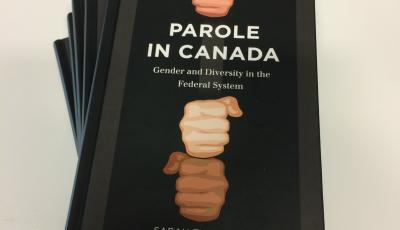
These are the sorts of questions and issues that animate my book, Parole in Canada: Gender and Diversity in the Federal System (UBC Press, 2016). In it, I consider how offender diversities have been identified, understood, and taken up using Canada’s federal parole system, and the Parole Board of Canada, as a case study. Drawing on interviews and internal government documents obtained through access to information requests, my research focuses on the emergence of concerns about gender and diversity in the federal parole system since the 1960s and analyses the initiatives that have been brought about in response to the needs of three identified groups: Aboriginal, female, and ‘ethnocultural’ offenders. I explore the development of elder assisted and community assisted parole hearings (which I’ve also written about here), diversity training for parole board members, institutional reports about ethnocultural offenders, attempts to ‘indigenize’ risk, and other diversity initiatives that aim to make the parole process more ‘fair’ and ‘effective’ for non-white, non-male offenders.
Through this work, I critically interrogate how the rhetoric of diversity impacts how one penal institution, which has been built upon white, masculine, and colonial norms and standards, comes to know ‘the other.’ My research findings indicate that institutional approaches to gender and diversity draw upon and circulate gendered, culturalized, and racialized knowledges of offenders and offending as a way to know certain populations and develop ‘responsive’ methods that take these differences into account. This is significant because the focus on knowing about various differences does not clearly translate into what to do about these differences in practice, such as during parole hearings or through parole decision-making.
Parole in Canada highlights the challenge of recognizing and responding to complex and multifaceted identities, histories, and experiences in the context of punishment. The incorporation of gender and diversity into the Parole Board of Canada and its parole policies and practices is not a straightforward undertaking. This book demonstrates that it’s important to think through the limitations of the politics of inclusion and the framework of diversity in the context of penal reform. It necessitates that we contemplate the attendant risks associated with the development and integration of so-called ‘culturally appropriate’ and ‘gender responsive’ policies and practices, considering what is both gained and lost in the process. As offender and prison populations become more ‘diverse,’ examining such issues is of particular importance. It’s my hope that Parole in Canada contributes to this conversation.
Share:
